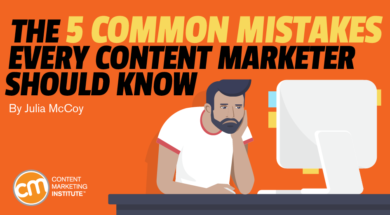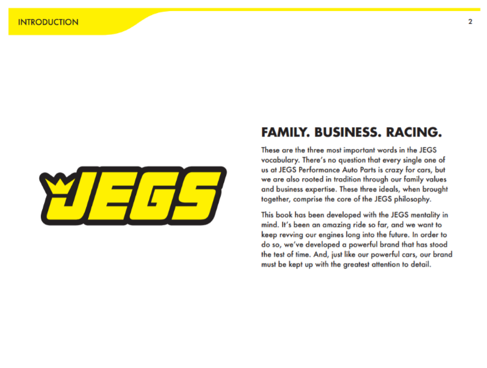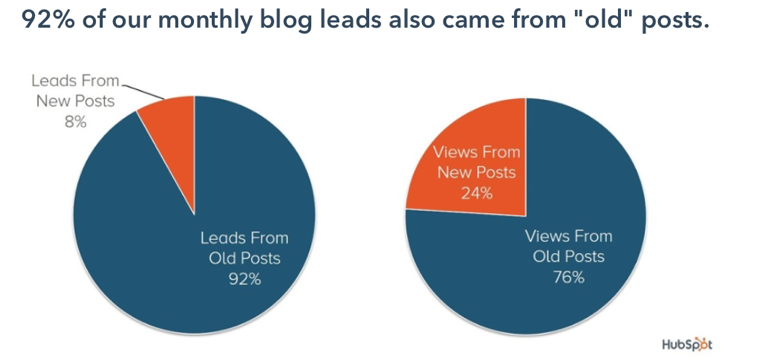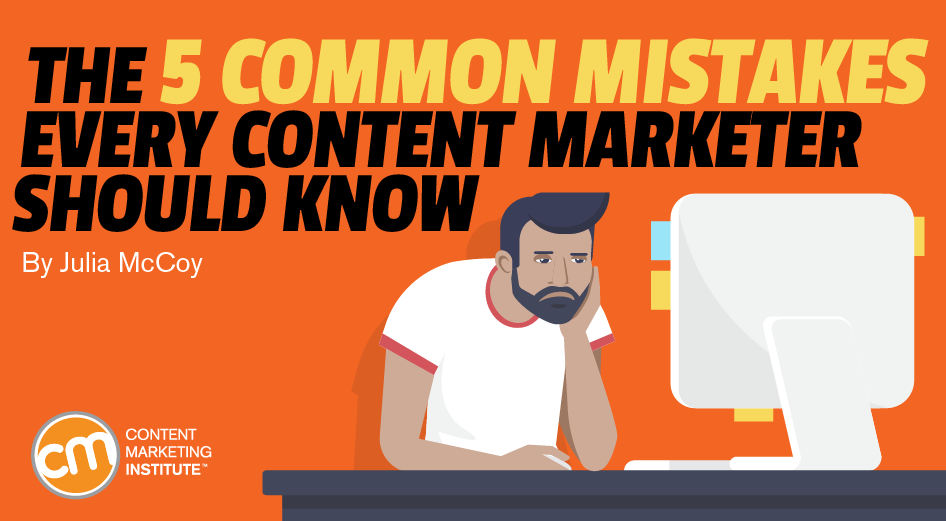
Is your brand’s content marketing performance mediocre or worse?
Before you create a laundry list of reasons to investigate the why, consider these five frequent, overarching mistakes. Avoiding these mistakes could save you time, money, and even customers.
Let’s dive in with the greatest mistake.
1. Conflicting guidelines or lack of strategy
If you want content that performs, forget throwing a style guide at the writers and calling it a day. You (and they) need more than that.
If you want #content to perform, do more than throw a style guide at the writers, says @JuliaEMcCoy via @cmicontent. #contentmarketing Click To TweetBrand style guides solve only one part of the equation. To achieve true consistency in content, from topics to direction to tone of voice and style, you need to get all of your content decision-makers in a room to talk strategy.
By the time you leave that room (or, let’s be real, that Skype call), you need to agree on a few things:
- Topic area – Your content publication needs one wheelhouse for topics. Choose one major area to cover and stay inside those lines.
- Direction and focus – Detail your brand mission and values. Describe the benefits you will provide your readers from your published content. What purpose will it serve in their lives? Explain why your brand is uniquely positioned to provide those benefits.
- Content rules – List the absolute deal breakers for your content, which all content creators must follow to the letter. These rules don’t change, ever. They can be as simple as setting standards for how your brand name is written and as complicated as outlining punctuation rules (e.g., writers may only use exclamation marks in calls to action).
Look at these brand guidelines from JEGS, an auto parts company, for inspiration. Every major area is outlined:

Note that these guidelines focus on more than the desired tone and style of the brand – they provide clear direction on JEGS’ mentality as a company, its values and mission, who comprises its audience, and the way it wants to be perceived on every medium.
Another thing: Check out how the style, colors, and design of the guide itself give you a feel for the brand and its chosen voice and tone. This is a fantastic resource for any content creator working for the company.
Bottom line: Don’t let anyone write a word of content until your strategy is clear. Communicate and agree on the direction for communications across channels and write them down. Set them in stone.
HANDPICKED RELATED CONTENT:
2. Fluff and jargon
One of the quickest ways to turn off your audience is to load your content with fluff or jargon.
Fluff is filler – unnecessary words and phrases. Fluffy writing robs your content of its power and impact. Plus, fluffy writing often panders to the audience, which is off the mark for its intelligence level.
For example, explaining technical terms to audience members well-versed in IT would insult their intelligence. Or using industry jargon in content meant for newbies would lead them to stop reading because they don’t understand the terms.
Bottom line: Speak directly to your audience members, not over or under their heads. If you see fluff and jargon filling your content, that’s a big clue you’re not writing to the correct level of understanding for the intended readers.
Speak to your audience members – not over or under their heads, says @JuliaEMcCoy via @cmicontent. #writingtips Click To TweetHANDPICKED RELATED CONTENT:
3. Traffic cannibalization from overdoing the same topics
Did you know that writing too many pieces on the same topic and focus keyword could damage your organic results in Google? It’s called keyword cannibalization. Your competing pages literally eat each other in the rankings.
Keyword cannibalization: Your competing pages eat each other in the rankings via @JuliaEMcCoy via @cmicontent. #SEO Click To TweetThe result? Your outdated, lackluster content will steal rankings from your newer, better piece on the same topic. Or worse, none of your pieces will rank.
Bottom line: To avoid this mistake, you have a few options:
- Merge the old with the new. Steal the best parts from the old content and merge them with the newer, better piece. Add a note about when the content was updated somewhere in the text. Or create a 301 redirect from the old content to the new content, then delete the old one.
- Delete the old content and move on (especially the poor-quality stuff you published before you knew better).
- “Noindex” the page that’s cannibalizing traffic from your better page on the same topic. This prevents search engines from indexing the page. (Think of this option as a last resort, especially if your goal is inbound traffic.)
4. Omission of content maintenance
Failing to maintain your published content means your older blogs and articles are not creating the value they could. Seriously, updating older content is one of the biggest ways to boost ROI.
Updating older #content is one of the biggest ways to boost ROI, says @JuliaEMcCoy via @cmicontent. Click To TweetHubSpot found that updating and optimizing old posts generated double the monthly leads. The average monthly search views on old content increased 106%. The biggest stunner? Ninety-two percent of monthly blog leads – and 72% of its blog views – came from older content.

Bottom line: It costs less money and time to update older pieces than creating new content from scratch. In short, updating your ranking content may boost it higher in search results – which means less work and more rewards.
HANDPICKED RELATED CONTENT:
5. Setting and forgetting content
Content isn’t an autonomous vehicle. Thus, dependence on automation to produce content isn’t going to work. If you think you can “set it and forget it,” think again.
Content typically performs better the less automated it is. Why? Look at this comparison from NPR:

One was created by a human. The other was generated by artificial intelligence. I’ll leave it to you to discern who (or what) wrote which one.
Bottom line: Content needs the touch of an artist to stand out in today’s sea of regurgitated, mashed-up topics and articles. Focus on less technology and more human-created ideas and execution.
HANDPICKED RELATED CONTENT:
Don’t make mistakes that seriously injure your bottom line
These five content marketing mistakes are, unfortunately, common. But now that you know them, you have a leg up to avoid or correct them. Make your content work for your brand and bring in profitable results. The potential problems lie in the planning and strategy at the outset. Start your fix there and start on the right foot.
Avoid the mistake of missing the valuable sessions at ContentTECH Summit this April in San Diego. Register today for the best rates.
Cover image by Joseph Kalinowski/Content Marketing Institute

